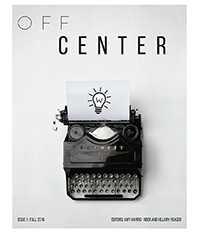Quotation Marks and Quotes
Quotation marks are used to indicate direct quotes (word-for-word recreation of someone’s writing).
Double quotation marks enclose only the quotation. Do not enclose expressions that indicate the speaker or that give information about the quote.
- “Ask not what your country can do for you,” said President Kennedy, “but what you can do for your country.”
- “I have a dream” is one of the most well known phrases spoken by Martin Luther King, Jr.
Single quotation marks enclose direct quotes within direct quotes.
- The teacher said, “Remember what the fireman told us: ‘Stop, drop and roll if your clothes catch on fire.’”
Direct quotations must be reproduced exactly, including capitalization and punctuation.
Use square brackets [ ] to indicate changes, such as changing the case of the first word in the direct quote, or additions, such as clarifying unclear references.
- As Nemanic remarks, “[This book] was written to raise the consciousness of primarily middle-class women, which included the 1968 protesters” (87).
Use ellipsis marks (. . .) to indicate omitted portions of a quote.
- Churchill says, “It is likely that the indigenous people of the United States will never demand that those guilty of such criminal activity be punished for their deeds. But the least we have the right to expect . . . is that such practices finally be brought to a halt” (446).
Punctuation within Quotes varies depending on whether or not it is part of the quoted sentence.
Commas go inside closing quotation marks.
- “MTSU almost never closes when it snows,” groaned the student.
Periods go inside the closing quotation marks if the quote ends the sentence.
- The newscaster said, “MTSU is opening on schedule today despite the snow.”
Note the difference between using quotation marks with dialogue and using quotation marks when citing a source. When citing a direct quote from a source, the punctuation will often go outside of the quotation marks after the source’s information (such as the author’s name and page number). For specifics, you should consult a handout on your specific citation style.
- “The appearance of Justine was calm. She was dressed in mourning and her countenance, always engaging, was rendered, by the solemnity of her feelings, exquisitely beautiful” (52).
Semicolons and colons go outside the quotation marks.
- Michael said, “I think the test will be easy”; however, I think the test will be difficult.
Question marks and exclamation points go inside the quotation if they are part of the quote; however, they go outside of the quotation marks if they are part of the sentence that includes the quotation.
-
You could almost hear the school children all over Middle Tennessee yelling, “It’s snowing! School’s out!”
-
Have you ever seen the Seinfeld episode entitled “The Kick”?
Office Phone
(615) 904-8237
Location
Walker Library, Room 362
Address:
The Writing Center
Box 70
Middle Tennessee State University
Murfreesboro, TN 37132
Read about our 45th Anniversary event and take a look at our growing digital archive!



